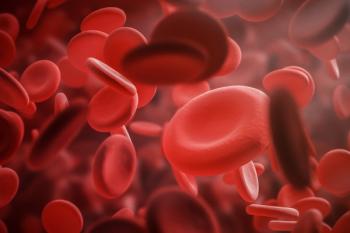
This device protects you from hazardous drugs
Competition has finally come to closed-system drug transfer devices for hazardous drug products. Cardinal Health received clearance from the Food & Drug Administration to market Texium, a closed male luer that mates with the company's SmartSite needle-free products. Cardinal's new product is the first U.S. competitor to Carmel Pharma's PhaSeal system, introduced in the 1990s.
"The need for these closed systems is based on alerts, information, and warnings from NIOSH [National Institute for Occupational Safety & Health], ASHP, the U.S. Pharmacopeia, and even OSHA [Occupational Safety & Health Administration]," said Texium product manager Yvonne Hansen. "All of these groups have spoken to the hazards of handling chemotherapeutics and other dangerous drugs."
NIOSH issued an alert on the hazards of working with pharmaceuticals in 2004 (Drug Topics, May 3, 2004). The agency estimated that more than 5.5 million workers are exposed to hazardous drugs prepared, mixed, stored, and administered in healthcare settings. Pharmacists, technicians, nurses, housekeepers, janitors, and other workers are exposed to more than 130 toxic, carcinogenic, teratogenic, or otherwise hazardous pharmaceuticals in the workplace.
"Competition is always good, and multiple device makers are addressing the safety issue," said Luci Power, senior pharmacy manager for parenteral support services, University of California San Francisco Medical Center. Power helped draft both the NIOSH alert on hazardous pharmaceuticals and ASHP's guidelines on handling antineoplastic agents. UCSF has used PhaSeal for several years and has tested Texium.
ICU Medical and Teva Medical are also preparing closed-transfer systems for the U.S. market. ICU declined to discuss its product, and Teva did not return repeated telephone calls. "All of these systems are better than nothing," Power said, "but competitors are going to have to show that they are as effective as PhaSeal."
The Texium system includes a vented drug vial access device that neutralizes vial pressure to minimize the formation of aerosols and surface contamination; a no-drip tip to help prevent spills, drips, and other forms of surface contamination; a passive system that closes when disconnected; an automatic safety lock to prevent discharge from a syringe during transport; a needle-free bag access device; and infusion sets.
"Texium is safe and easy to use," Hansen said. "It offers a full continuum of care, not just protection at the pharmacy and preparation end of the medication process. We feel we are more cost-effective than PhaSeal because many parts of the Cardinal system are already in use in many institutions."
Carmel Pharma is unfazed by the new competition. While Cardinal touts cost-effectiveness and ease of use, Carmel Pharma cites international studies showing its PhaSeal device can reduce or eliminate surface contamination in day-to-day hospital use. "We still have a significant advantage," said Christine Crooks, Carmel's marketing director for North America. "We are the only system with actual clinical data in the marketplace."
The most significant difference between the two systems is the vial access device, said Power. Texium uses a vented device to equalize pressure inside the drug vial, while PhaSeal uses a closed device with a flexible diaphragm to equalize pressure.
Texium equalizes pressure inside and outside the drug vial through a 0.2-micron hydrophobic air venting filter. Unlike PhaSeal's closed system, it allows vapors to escape the system. "The problem is we do not know how much of the contamination problem is due to vapors," Power said. "I am not going to go to this product until I can say it is as effective as PhaSeal."
Newsletter
Pharmacy practice is always changing. Stay ahead of the curve with the Drug Topics newsletter and get the latest drug information, industry trends, and patient care tips.





























































































































